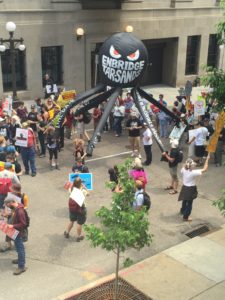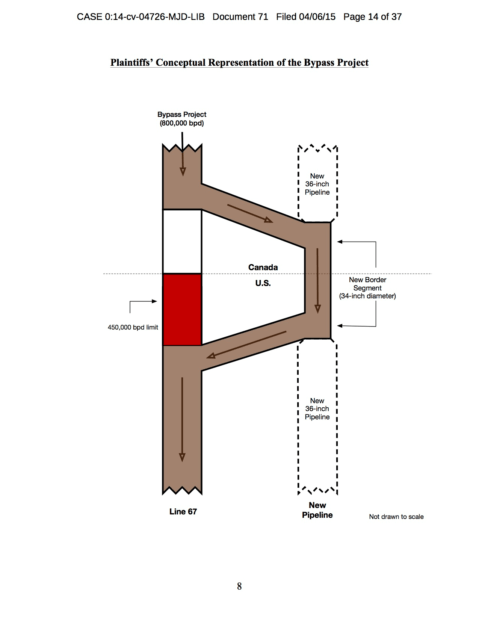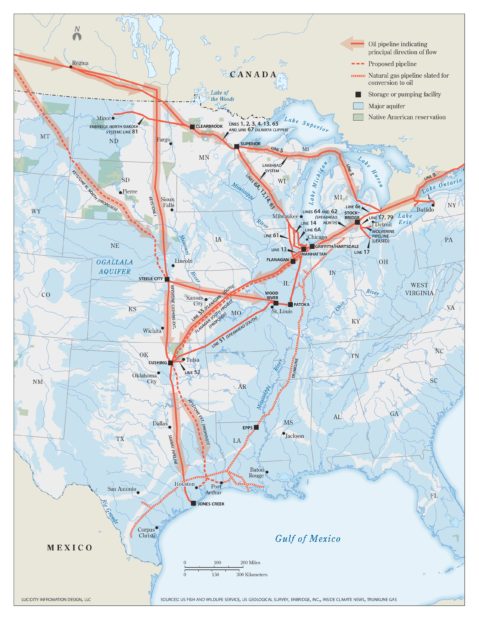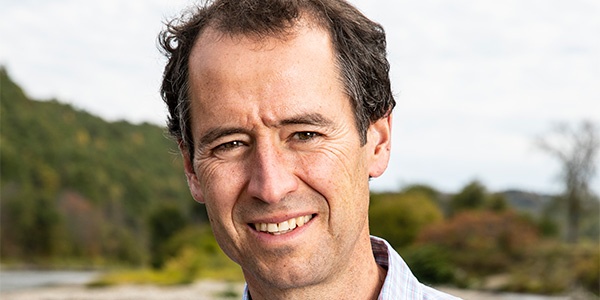We have much more to do and your continued support is needed now more than ever.
Winning the Fight Against the Enbridge Octopus

This means that the proposed Sandpiper Pipeline – which would span 610 miles and be designed largely to carry Bakken crude from its source in North Dakota to refineries and markets in the Great Lakes and beyond – isn’t going to get built any time soon, or ever. Enbridge, a company with a horrible safety record, was responsible for the disastrous tar sands spill that sullied about 40 miles of the Kalamazoo River in July of 2010. It is the largest inland spill in American history and pollutes the river to this day.
A Big Win For Wildlife and People

This ruling is a big win for wildlife and people. The PUC had issued a certificate of need for Sandpiper without doing a state-level environmental impact statement. Before making a decision, the court ruled that the PUC must take a hard look at the pipeline’s impacts – which include direct threats to native resources, including wild rice, and wildlife in northern Minnesota.
Judge Klaphake is reiterating the basic purpose of environmental review laws: government decision makers need to look before they leap. It makes little sense to determine a pipeline is needed prior to studying the harms and alternatives that weigh against the need.
Sensibly, Judge Klaphake found that:
[T]he completion of an EIS at the certificate of need stage [ensures] decision-makers are fully informed regarding the environmental consequences of the pipeline, before determining whether there is a need for it.
Other key decision-makers on pipelines need to get the message.
Implications for Other Great Lakes Pipelines
While Judge Klaphake’s decision concerned state-level environmental review, he looked to federal law for guidance. He noted that:
The United States Supreme Court has explained that the early-stage environmental review similarly required by NEPA is critical because it “ensures that that important [environmental] effects will not be overlooked or underestimated only to be discovered after resources have been committed or the die otherwise cast.”
This statement resonates with another pending court case involving Enbridge: the federal State Department’s illegal, back room approval of a scheme by Enbridge to double the flow of dangerous tar sands oil through its Alberta Clipper line. The Alberta Clipper Pipeline runs from the tar sands fields in Alberta to Superior, Wisconsin, where it connects with other Great Lakes pipelines.
The scheme involves a temporary switch of tar sands crude oil north of the border from one Enbridge pipeline into another line and then back again once the oil crosses the border. This switch is cleverly designed to avoid and undermine the State Department’s ongoing federal environmental review process. This scheme became operational this summer and has allowed Enbridge to increase tar sands flow on the Alberta Clipper from 450,000 barrels per day to 800,000 barrels per day with no oversight.


Stop Tar Sands Expansion
On September 10, 2014, a federal judge heard arguments that allowing Enbridge to double tar sands flow across the border on the Alberta Clipper via this clever switch undermines the State Department’s on-going environmental review. This federal court case is like the the Sandpiper Pipeline state court case because the plaintiffs are similarly arguing that the government needs to look at the impacts of project before approving it.
These cases are consistent with the Administration’s existing position on Keystone XL. With Keystone XL, the Administration has demanded and conducted studies of the many impacts of bringing tar sands across the border and through the heartland of America. These impacts include more harmful carbon emissions, spill threats to waters and wildlife, impacts to landowners and communities where the pipeline will run, and impacts to refining communities.
Like Keystone XL, the Alberta Clipper expansion will increase climate emissions, put waters and wildlife at risk, and harm landowners, tribes and communities.
So why are the State Department and Secretary Kerry giving Enbridge a free pass?
Even More Pipeline Projects
Enbridge’s expansion plans have no end. Enbridge is actively seeking to entirely replace an old transboundary pipeline, called “Line 3,” to allow it to carry twice as much tar sands oil. Governmental decisions about Line 3 also require full consideration of environmental impacts. Judge Klaphake’s state court decision means that the PUC must prepare a formal environmental impact statement for the Line 3 Pipeline project.
The State Department must similarly step up and conduct a federal environmental review of Line 3. Hopefully, the federal judge will make this requirement clear. But even if the judge finds that the State Department may shield Enbridge from an environmental impact statement, Keystone XL clearly demonstrates that the State Department can do the right thing and order a full and timely federal environmental review. We expect President Obama and Secretary of State Kerry to do nothing less.
 Tell the State Department to not allow expansion of the Alberta Clipper tar sands pipeline!
Tell the State Department to not allow expansion of the Alberta Clipper tar sands pipeline!






















